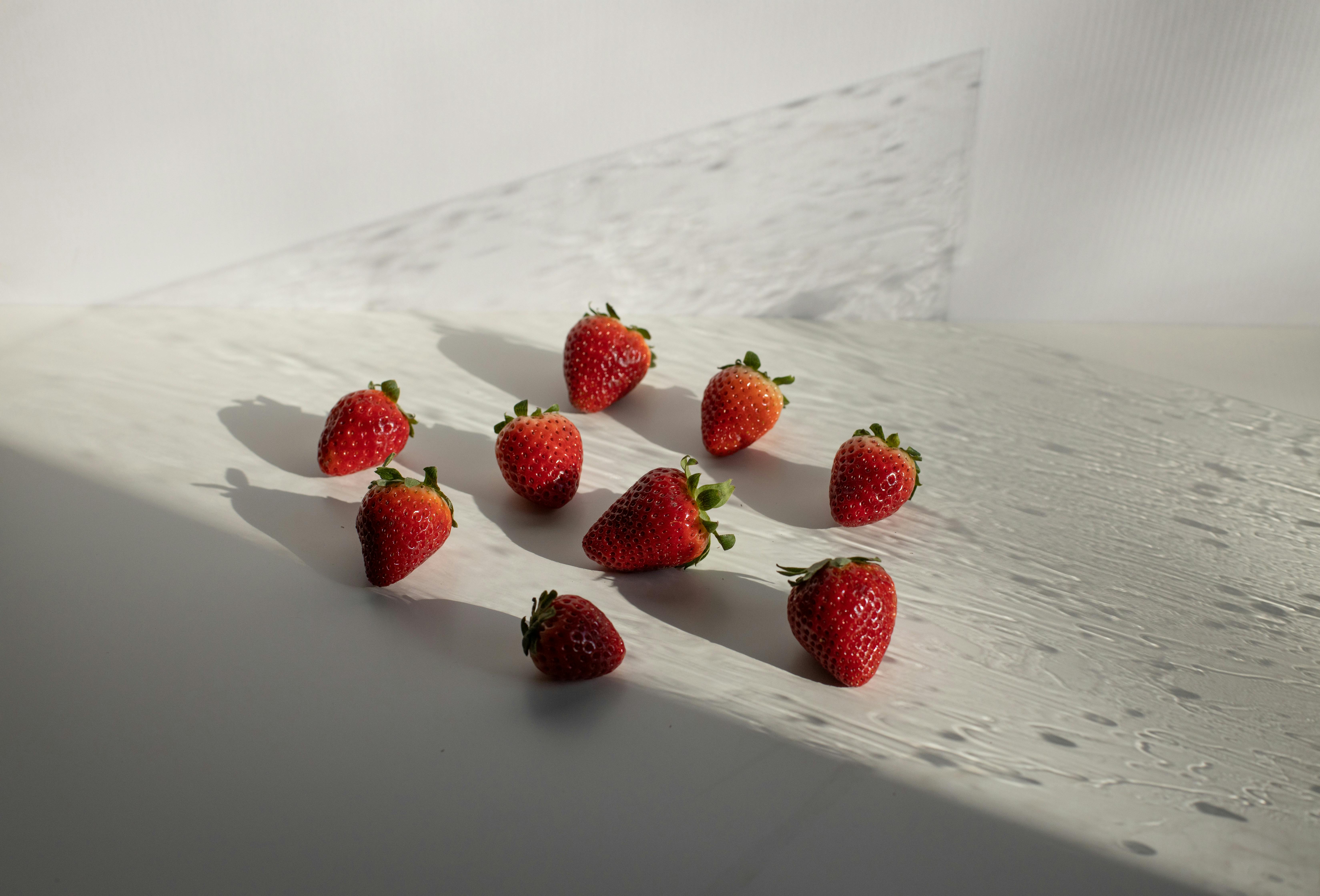Strawberries are a delicious and nutritious fruit, enjoyed by many all over the world. While they are a great addition to many meals, not everyone knows that these tasty treats also require regular sunlight to grow and thrive. In this article, we will explore the importance of sunlight for strawberry plants and how to ensure that your strawberry crop receives enough light to produce sweet and delicious fruit.Strawberries need at least 6-8 hours of direct sunlight per day in order to grow and produce fruit. They should be planted in a spot that receives full sun for most of the day. When planted in an area with too little sunlight, the strawberry plants will not produce as much fruit.
What Is The Best Location For Growing Strawberries?
Growing strawberries is one of the most rewarding and enjoyable activities for gardeners. The right location is key in order to have a successful crop. Strawberries prefer full sun, so it is important to choose a spot that gets at least 6-8 hours of sunlight each day. It is also important to select an area that has good air circulation, as this will help reduce disease and insect problems. Soil should be well-drained and rich in organic matter, as this will provide the best environment for plant growth. Before planting, it is recommended to test the soil in order to determine if there are any nutrient deficiencies or pH imbalances that need to be addressed.
Strawberries are a shallow-rooted crop, so they need regular watering throughout the growing season. Avoid placing plants in areas where they may become waterlogged or flooded due to poor drainage. Also avoid areas where water tends to pool or stagnate, as this can cause root rot and other diseases. It is also important to avoid planting strawberries near other plants that may harbor pests or diseases that could spread to the strawberry plants.
Finally, when choosing a location for growing strawberries, make sure it is protected from strong winds that can damage delicate foliage and flowers. Planting on the south side of a structure such as a fence or wall can help provide some protection from strong winds and extreme temperatures. With adequate sunlight, well-drained soil, adequate moisture and some protection from wind, you should have success with your strawberry crop!
How Does Shade Affect The Growth Of Strawberries?
Shade is an important factor that affects the growth of strawberries. When growing strawberries, it is important to consider the amount of shade that your strawberry plants will receive. Too much shade can reduce the yield and quality of strawberries. On the other hand, too little shade can also cause issues, as it can lead to sunburned fruit or even death of the plant.
When selecting a location for your strawberry plants, you should ensure that they will receive enough sun throughout the day. At least six hours of direct sunlight is recommended for optimal growth and production. For those in cooler climates, more sun may be needed to ensure adequate growth and fruiting.
In addition to direct sunlight, it’s also important to consider how much shade your strawberry plants will receive at different times of day. If your plants are in an area with a large amount of shade during part of the day, then they may not be getting enough sunlight to produce optimal yields. If this is the case, then you may need to move them to a different location or create some sort of shade structure for them.
Finally, if you are growing strawberries in pots or raised beds, make sure that they are not receiving too much shade from surrounding trees or buildings during certain times of day. If so, this could limit their ability to properly photosynthesize and produce fruit.
In conclusion, when growing strawberries it is important to consider the amount of sun and shade that they will receive throughout the day. Too little or too much can both have negative effects on their growth and yields.
How Much Shade Is Too Much For Strawberries?
Strawberries are one of the most popular fruits to grow in the home garden and rightfully so. Not only are they delicious, but they also require very little care and attention. However, one of the main considerations when growing strawberries is how much shade they need. Too much shade can result in a poor harvest or even stunted growth. On the other hand, too little shade can cause sunburns and other damage to the fruit and leaves. So how much shade is too much for strawberries?
The amount of shade that strawberrries need depends on several factors such as the variety of strawberry being grown and the climate where it is being grown. In general, strawberries need at least six hours of direct sunlight each day to stay healthy and produce a good crop of fruit. If they receive more than eight hours of direct sunlight each day, then they may be getting too much heat and can suffer from sunburns or wilting leaves. Shade cloth can be used to protect strawberries from excessively hot temperatures.
Shade also helps prevent fungal diseases such as leaf spot or gray mold from developing on strawberry plants. Fungal diseases prefer warm, humid conditions and so providing some shade can help keep them at bay. The amount of shade needed will depend on the climate but a good rule of thumb is that if you can see your shadow while standing next to your strawberry plants, then they are receiving enough shade.
In conclusion, it is important to provide enough – but not too much – shade for your strawberry plants in order to ensure a healthy crop of delicious fruit. The amount of shade needed depends on several factors such as variety and climate but a good rule of thumb is that if you can see your shadow while standing next to your plants then they are receiving enough shade.
The Benefits of Sunlight for Strawberry Plants
Sunlight is essential for strawberry plants to produce healthy, quality fruit. Strawberries require plenty of sunlight to grow and develop, and the best way to ensure healthy plants is to provide them with at least 6 hours of direct sunlight each day. Sunlight allows for photosynthesis to occur, which is necessary for the plant to produce energy and grow. In addition, sunlight helps to reduce disease and pests that could harm the plants.
Sunlight also helps regulate temperature in the soil, creating an ideal environment for strawberry plants. Warmer soil allows the roots of the plant to absorb more nutrients from the soil, leading to healthier growth and better yields. Sunlight also aids in pollination by bringing in beneficial insects such as bees and butterflies. This increases the chances of successful pollination, which leads to larger and tastier strawberries.
Finally, sunlight provides essential ultraviolet (UV) rays which are necessary for proper fruit development in strawberries. UV rays help boost immunity against diseases and pests, as well as increase fruit production by helping fruits ripen faster. Without enough sunlight, strawberry plants may not produce enough flowers or fruits or may yield smaller fruits with a less intense flavor than those grown in sunny environments.
Overall, providing adequate sunlight is important for growing healthy strawberry plants that will produce quality fruits with intense flavors. It is essential that strawberry plants receive at least 6 hours of direct sunlight each day in order to ensure proper growth and development. With enough sunlight, strawberry plants can thrive and provide a delicious harvest every season!

Too Much Sunlight For Strawberry Plants
Strawberry plants require a certain amount of sunlight in order to thrive and produce healthy fruit. Too much sun, however, can have some drawbacks for strawberry plants. Excess sunlight can cause the leaves to burn, resulting in stunted growth and reduced yields. The high temperatures associated with intense sunlight can also lead to increased water loss from the plant, resulting in dehydration and wilting. Additionally, too much sun can cause the strawberries themselves to become overly ripe and soft before they are ready to be harvested. Finally, excessive direct sunlight can weaken the plants’ defenses against pests and diseases, leading to infestations and infection that reduce yields even further.
For these reasons, it is important to ensure that strawberry plants get enough sunlight while avoiding excessive exposure. This means providing adequate shade during the hottest parts of the day or using structures like shade cloths or trellises to provide some protection from direct sunlight. It is also important to monitor for signs of heat stress in strawberry plants and take steps such as providing extra water or moving them into an area with more shade if necessary. By following these steps, gardeners can ensure that their strawberry plants get just the right amount of sun for optimal growth and yields.
Alternatives To Direct Sunlight For Growing Strawberries
Growing strawberries is a rewarding and popular activity. While direct sunlight is essential for strawberry production, there are alternative options to consider if you lack the necessary direct sunlight. Artificial lighting and partial shade are two of the most commonly used alternatives for growing strawberries in areas with less than ideal sun exposure.
Artificial Lighting
Artificial lighting is an excellent option for those who lack access to direct sunlight. There are various types of artificial lights available for use in strawberry production. Fluorescent bulbs, high-pressure sodium bulbs, and LED lights all provide sufficient light levels for strawberry growth. When using artificial lighting, it is important to ensure that plants receive at least 8 hours of light per day to promote optimal growth. Additionally, the lights should be positioned at least 12 inches above the plants to prevent burning or stunting of growth.
Partial Shade
Partial shade can also be used as an effective alternative to direct sunlight when growing strawberries. Partial shade provides plants with enough light to photosynthesize while also protecting them from intense sunlight that can cause damage or stress. When providing partial shade, be sure to keep in mind that strawberry plants need at least 6 hours of direct sunlight per day in order to thrive. If your area receives less than 6 hours of sunlight per day, then supplemental artificial lighting may be necessary in order to ensure your plants receive enough light for proper growth and development.
In conclusion, while direct sunlight is an important element for successful strawberry production, there are alternatives available if you are unable to provide adequate sun exposure for your plants. Artificial lighting and partial shade are two viable options that can provide your plants with the necessary light levels while protecting them from harsh elements such as extreme temperatures or intense sun exposure. By using one of these alternatives, you can successfully grow delicious strawberries in areas without access to ample direct sunlight.
Effects Of Artificial Light On Strawberry Plants
Artificial light can be used to help strawberry plants grow and produce fruit. The effects of artificial light on strawberry plants depend largely on the type of light used, the intensity of the light, and how long it is exposed to the plants.
When exposed to artificial light, strawberry plants may experience an increase in growth rate. This is because they will receive more energy from the light than they would from natural sunlight. The extra energy can help the plant grow faster and produce more fruit.
The intensity of artificial light can also have a positive impact on strawberry plants. If the intensity is too low, it won’t be enough to stimulate growth or production of fruit. But if it’s too high, it could potentially damage or even kill the plant.
In addition, exposing strawberry plants to artificial light for too long could also have a negative effect. This is because too much exposure can cause stress on the plant, leading to reduced growth and production of fruit.
Overall, artificial light can be beneficial for strawberry plants if used properly and in moderation. It can help increase growth rate and production of fruit when used correctly but should not be exposed to them for too long as this could cause stress on the plant and lead to reduced growth and production.

Conclusion
In conclusion, strawberries need sunlight to grow and produce the best-tasting fruit. Without enough sunlight, a strawberry plant may not produce many fruits or the fruit may not taste as sweet. Strawberries that receive too much sun can also suffer from sunburns, which can cause the fruit to rot and become unappetizing. Therefore, it is important to provide your strawberry plants with enough sunlight without overdoing it. Through the use of trellising and mulching, you can ensure that your strawberries are getting the right amount of light.
By providing your strawberry plants with adequate sunlight and proper care, you can enjoy a plentiful harvest of sweet, delicious fruits for years to come.



